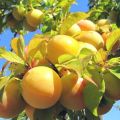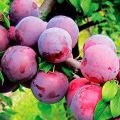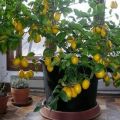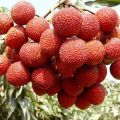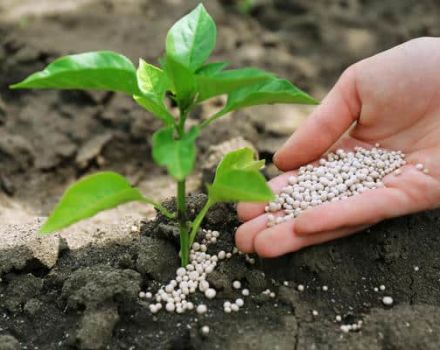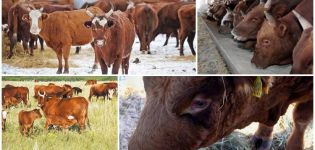How to grow lime from stone at home, description of varieties
Growing citrus plants at home is gaining popularity. Mandarin, orange, lime trees have adapted to indoor conditions. When properly planted (cuttings or seeds) and proper care, a healthy, strong tree can be grown that will delight with flowers and bear fruit.
Description and characteristics of lime
The original place of growth of this tree is Southeast Asia. Under natural conditions, representatives of this plant are tall, reaching a height of 1.5 to 4.5 m. There are small thorns on the branches. The length of the leaves is up to 7 cm, the width reaches 4 cm, they have a green color with a dark shade. The tree has fruits up to 6 cm in diameter, with a range of tastes from sour to sweet, depending on the varieties. The skin is very thin at full maturity, the flesh is juicy. The crown of the tree is spreading.
Citrus is used in cooking. Lime fruit tastes sour than lemon. Recognized as a low-calorie product (16 kcal), thanks to which it is included in the menu of those who follow the figure. Of the various representatives, the Tahitian lime is the most popular, it is used in the preparation of mojito.
Plant varieties
Lime has many varieties that have certain distinctive features.
Limetta
It is a sweetish fruit. It is not completely sweet, the pulp contains more sugar than acid. The fruit juice is sweet, has a distinctive feature: upon contact with air it acquires bitterness, so you need to drink or use it immediately.
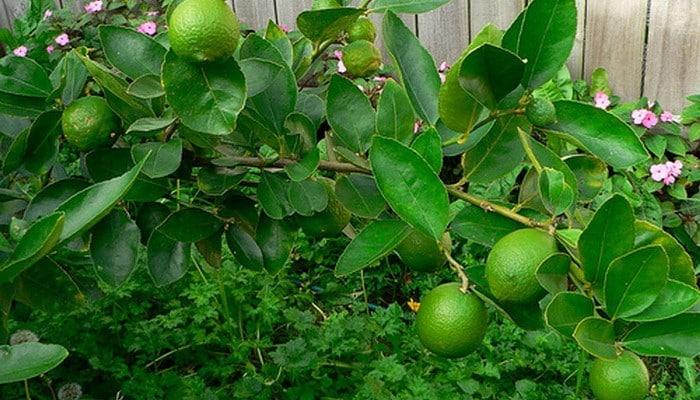
Mexican lime
It is the most common lime. Contains a small amount of seeds, the skin tightly fits the flesh, thin, when ripe has a yellow-greenish tint. The pulp is also yellow-green, tender, with a characteristic odor and sour.
Limetta Pursha
The tree blooms with white flowers. Fruits weighing about 80 g, having a spherical appearance, partially flattened at the poles and with a curved end. The skin is embossed, rough, bright, yellow. Does not tightly fit the pulp, easily separates. Lime fruit has a juicy pulp with a sweet-sour taste.
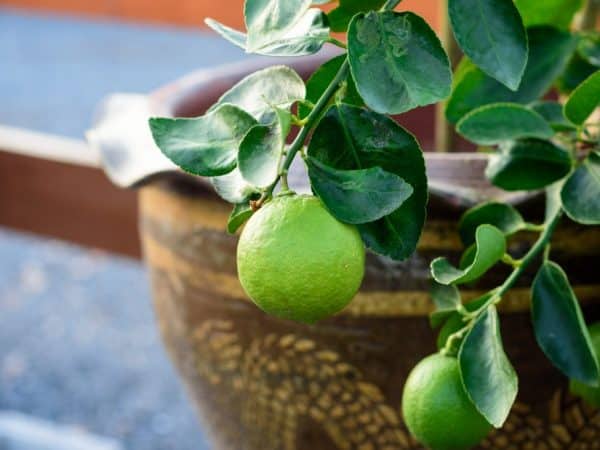
Palestinian Sweet Lime
Fruits are spherical, slightly ribbed. There are few seeds, the skin is thin with a smooth surface, an orange tint and an oily smell. The pulp has a straw-yellow hue, the taste is bland with some bitter aftertaste.
Lime Rangpur
The fruits of this lime variety are sour, 5 cm in diameter, with an easily peeled skin that has a dark orange color, like the pulp.
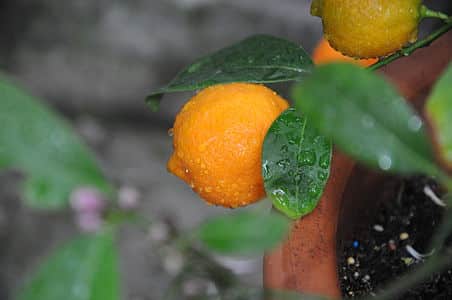
Tahiti
The size of the fruits of this tree is 2 times larger than the Mexican lime. Fruits are greenish, juicy, practically seedless. Thin skin at full maturity has a yellowish tint, tightly fits the pulp, but the harvest is harvested with a greenish skin. The internal contents are very sour.
Lime variegata
The fruit at first has a striped color, after ripening it is pale yellow. The pulp is sour, pleasant to the taste. The skin is thin, fits the flesh well.

Neapolitanum
Recognized as one of the most delicious limes. The fruit has a thin, fragrant skin. The pulp has no seeds, is juicy and sour. Lime has a characteristic scent of essential oils.
Santa Barbara
A high-yield variety. The fruit has a bright orange color, slightly oval in shape. The pulp is sour, but extremely aromatic. The skin is of medium thickness, with a yellowish or slightly orange color. There are many small seeds inside.
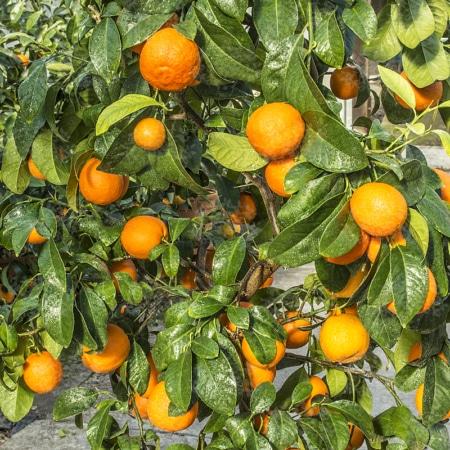
Kaffir
The leaves of this lime are sometimes used in place of laurel. It has a strong aroma. The zest is valuable, it is used more often, the fruits have little juice.
Agrotechnics for growing lime indoors
At home, the potted lime tree is grown by cuttings or seeds.
Cuttings
To grow a plant in this way, you need:
- Cut the shoot from the top of the tree 15 cm long. It should have about five good buds. The cut is carried out at an angle of 45about.
- Remove all leaves from the cutting, leave only the three largest and healthiest.
- Treat the cutting with "Heteroauxin" or "Kornevin", stimulants of the formation of the root system.
- Plant the shoot in moist sand. Cover with cut plastic bottle half.
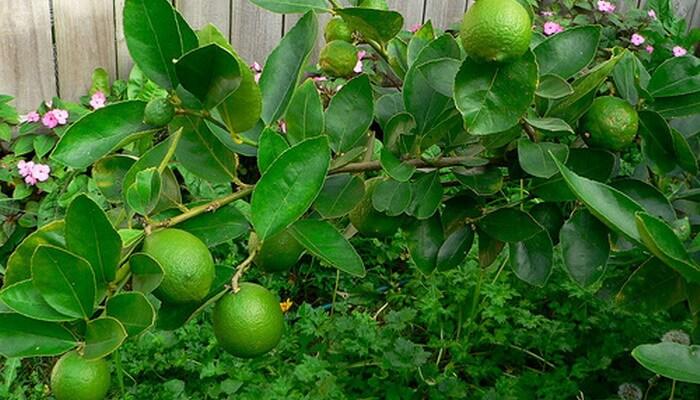
For effective sprouting of a tree, special conditions are required:
- high humidity;
- temperature regime.
It is important to place a pot with a lime tree in a well-lit place, without direct sunlight. Escape requires regular watering and spraying.
When carrying out work in accordance with all the requirements, the sprout will take root in a month. Next, you need to accustom yourself to growing conditions. To do this, gradually remove the bottle for a while. For transplanting, a pot with a diameter of about 7 cm is needed, the root system develops well, is less susceptible to decay processes. With proper care, the plant will begin to bear fruit in the third year.
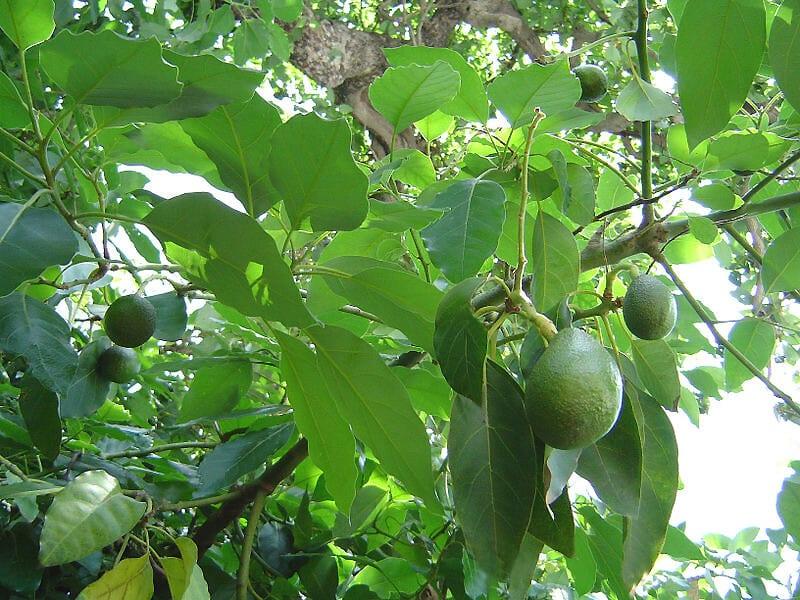
Seed growing
A healthy and strong tree is obtained from the bone if certain requirements are met:
- The stone should be from a good fruit: no damage, signs of rot, ripe.
- Wash the seeds, dry for about 2 hours.
- For planting, a mixture of a universal substrate with sand (coarse-grained) is used, take equal proportions.
- Put expanded clay on the bottom of the container, layer 1.5 cm thick. After filling with the mixture, place the grain.
- Keep in a greenhouse environment. Periodically ventilate and irrigate the ground with warm water. There should be a stable temperature: about 25 aboutFROM.
- The sprout appears in a time interval of 2.5 to 4 months. Several sprouts sprout.
- Choose a strong sprout with 2-3 leaves.
- Gradually accustom to the conditions of the house. Plant the sprouts later.
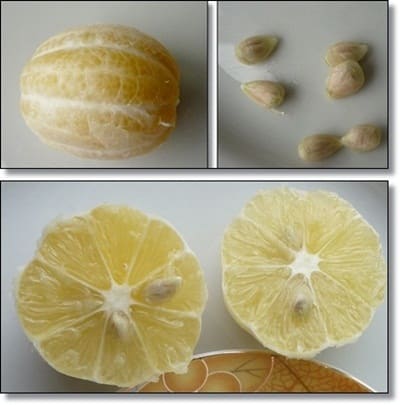
Fruiting of a tree with proper care begins in the 4th year. The main advantage of growing is the preservation of all varietal qualities of the original specimen.
Care rules
Care for the lime tree is as necessary as for other citrus fruits. The main requirements are put forward for the parameters discussed below.
Illumination
It is a sun-loving tree that prefers bright, but diffused light, without harsh direct rays of the sun. The best place is on a window on the west or east side. The south windows need shading, especially at noon.But on the north windows artificial lighting will be required. A tree needs a 12-hour light span.

Temperature
The temperature regime depends on the seasonality. In spring and summer, it is about 30-35 aboutC. Autumn and winter - 20-25 aboutC. This temperature contributes to the full development of the tree.
Humidity
It is a moisture-loving plant, it requires increased moisture throughout the year. For this it is important:
- water the leaves daily;
- warm shower monthly;
- put on a container with additional moisture (wet moss, sand, expanded clay);
- place a container with liquid next to it.
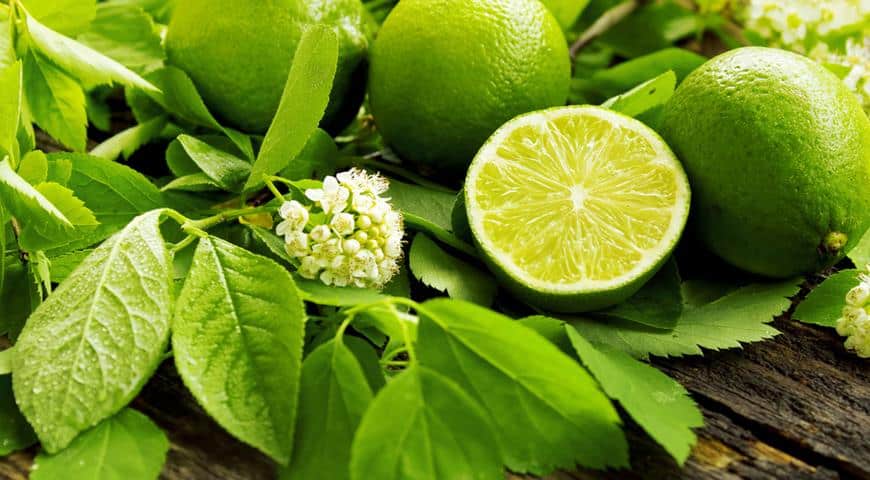
Watering
Lime needs moderate watering as the soil surface dries. In winter, watering is carried out every 10 days. The liquid is used exclusively at room temperature.
Fertilizer
Caring for a lime tree involves applying top dressing. Adequate nutrition provides the plant with good development and fruiting. Apply citrus fertilizer twice a week.
It is recommended to alternate between organic and mineral products.
From organic fertilizers, you can use mullein infusion (diluted). In winter, fertilizing is not carried out if the tree is at a low temperature. If kept warm, fertilize twice a week. The liquid mixture is injected until it flows out of the drainage holes, but strictly on the next day after watering, so as not to scorch the root system.
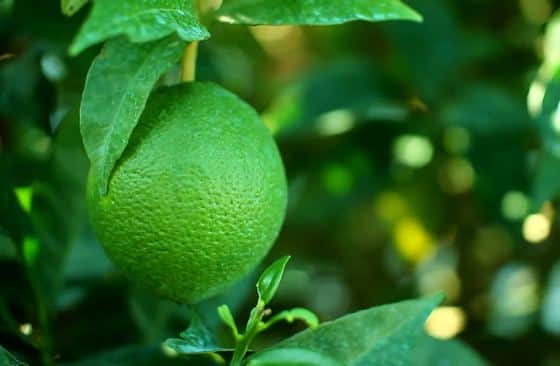
From mineral fertilizers, it is recommended to use phosphorus-potassium agents. They promote fruit growth, flowering and development. Gardeners recommend using fish soup. Boil fish waste for about 5 minutes, drain, water. It is used monthly when the tree reaches a meter height.
Pruning
Tree maintenance involves pruning every year. Crown formation must be started immediately after disembarkation. For this, the main shoot is cut in order to stimulate the lateral shoots. The next year, all branches are cut to a third of their length. Further cutting involves the removal of shoots that thicken the crown.
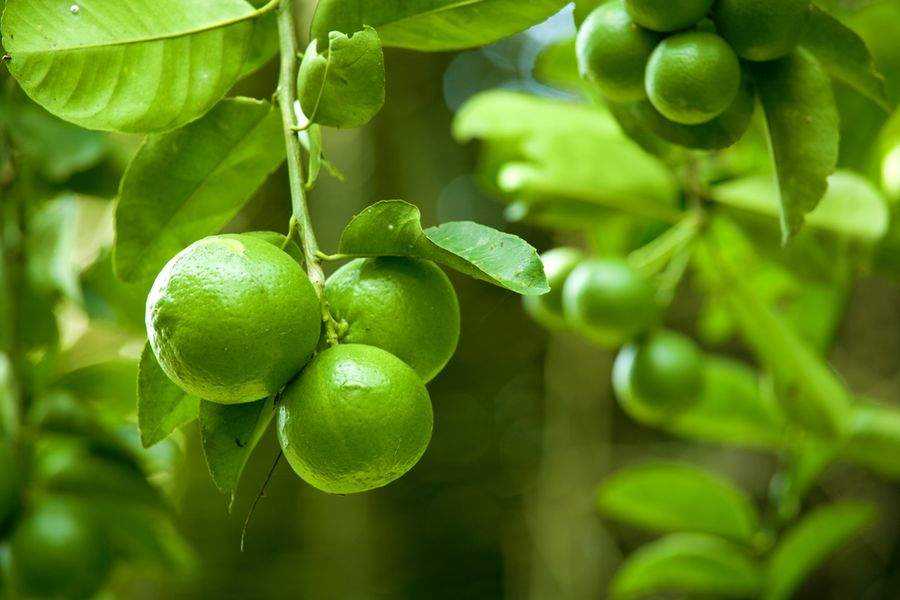
Transfer
A young tree needs an annual replanting at the end of the winter period. Mature trees are replanted when the roots show through the drainage holes. In mature trees, the topsoil is replaced.
For transplanting, a citrus composition with moisture permeability is required. It is allowed to plant in a mixture of sod, leafy soil, humus and sand. Everything is mixed in equal parts. To avoid trauma to the root system, the tree is transplanted with a clod of earth.
Diseases and pests
Most often, the tree is susceptible to damage by a tick (spiderweb), mealybug, scabbard.
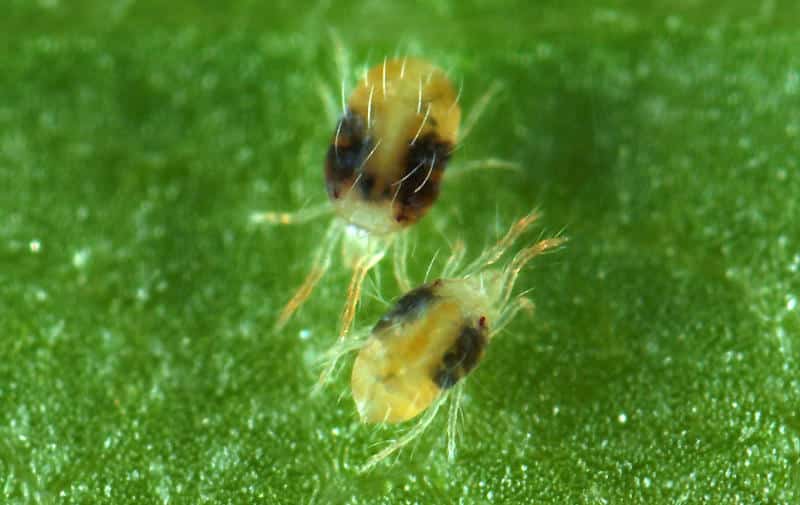
The symptoms are as follows:
- the shape of the leaves changes, yellowness appears;
- a black or grayish bloom forms on the surface of the sheet;
- a sticky film appears on leaves and shoots;
- the presence of very small reddish insects;
- the formation of lumps on the inner surface of the leaves;
- the formation of a cobweb on the leaf part;
- growth stops, stops blooming.
To get rid of pests, it is recommended to spray the tree with a soap solution. When the treatment did not bring any result, use chemical agents: "Aktara" or "Aktellik".

In addition to pests, the plant is prone to gommosis. It is characterized by microcracks on the shoots. The main symptom of the disease is that a sticky liquid flows out of the cracks. The tree dries quickly and dies. The reasons provoking the disease include:
- improper fit (deep);
- excessive watering;
- using cold watering liquid.
To eliminate it, it is recommended to treat the tree with diluted copper sulfate.Then grease the base of the tree with pasty copper sulfate or lime.
Cleaning and storage
Harvesting is done in the last month of summer, early autumn. Keep cool, then the fruits do not lose their valuable properties for 3 weeks. In indoor conditions they will last a week. Long-term storage leads to drying and hardening of the peel. Partially losing moisture, the skin shrivels. Recommended to be wrapped in paper. Ripe fruits are stored in the dark, unripe in light, not in direct sunlight. The best storage place is the refrigerator.
Cut limes are kept cold for about a week. In a warm place, the pulp loses its aroma and dries up. Before planting, you need to decide on the type of plant. Subject to the requirements for planting and care, after 4 years the tree will begin to bear fruit.


